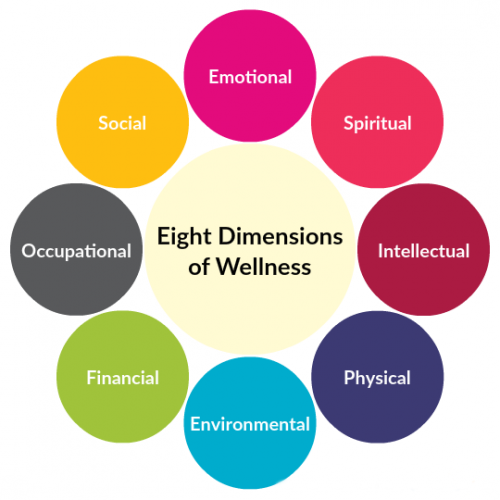Wellness is a holistic approach to overall health. The US National Wellness Institute co-founder Bill Hettler established six dimensions of wellness in 1976 consisting of physical, emotional, intellectual, occupational, social, and spiritual. Researchers have added two additional dimensions of wellness: financial and environmental. Overall wellness must include equal attention to all eight dimensions of wellness.
Physical wellness can be defined as recognizing the need for physical activity, nutrition, and sleep. This definition covers three of our pillars of overall health! Building healthy habits through conscious effort keeps the body functioning at an optimal level, forming the basis of our coaching programs. It encompasses a specific focus on choosing to avoid personal risk factors while forming a wellness mindset to enhance quality of life.
10 Tips to Enhance Physical Wellness
- Nurturing physical wellness begins with understanding unhealthy patterns and triggers. Self-assessment in the areas of movement, nutrition, and sleep helps with appropriate goal setting to achieve a larger health goal. When cardiovascular health is the goal, prioritizing movement can be as easy as getting out of the office on lunch breaks to take a walk instead of eating at the desk and working through lunch. Make it more fun by inviting coworkers along for accountability.
- Building health habits requires a change in your surroundings to improve your ability to make healthy choices. Cutting back on sugar-laden beverages and drinking more water is one example. Even diet drinks with artificial sweeteners can trigger a craving for more sugar. Start by substituting water for one meal a day.
- Building muscle through resistive exercise helps improve metabolism and provides more muscle mass to burn the fuel you consume. Functional strengthening is easy to incorporate into your day by scheduling a movement break every 2 hours. Try desktop push-ups for the upper body or repeated sit to stand for the legs. All movements help keep the body performing optimally.
- Physical wellness is directly impacted by the quality and quantity of sleep cycles. A prolonged lack of sleep is linked to obesity, insulin regulation, high blood pressure, cardiovascular disease, and stroke, just to name a few. Finding solutions to better quality of sleep can be found in exploring your sleep environment. Temperature, light, and physical comfort in bed all impact the quality of sleep.
- As we age, metabolism slows and often results in steady weight gain. Lean muscle mass decreases with age, our activity levels decrease, and food breaks down differently. Finding a personal balance in strength training, aerobic activity, healthy eating, and appropriate sleep all help to keep metabolism steady and the body functioning more efficiently.
- Alcohol consumption can be a trigger for weight gain and poor sleep. Limiting alcohol helps to cut empty calories, especially at the end of the day to “wind down”. The extra sugars cause insulin to spike at night and sleep cycles are interrupted. These negative effects on physical wellness can be avoided by setting boundaries to when and how much alcohol is right for your health and well-being.
- Making smart nutrition choices can be easier than you think. Healthy eating involves cutting back on unhealthy processed foods and choosing more variety. Cutting back on sugar and processed oils will make a big impact in controlling cravings. Snacks are not needed to keep the body energized. Instead, focus on 2-3 healthy meals with a variety of proteins, fruits, and vegetables.
- The physical benefits of sleep include increased mood, energy, and attention span. When the body is refreshed and restored at night, the days become more productive. For those who have tried every diet and exercise program out there, changing sleep habits is most likely the key to unlocking physical wellness.
- Change is easier to achieve with appropriate support and community. Get the whole family involved in taking a walk or bike ride after dinner. Use shared interests with friends and family to get more active. And don’t forget to set a steady bedtime free of distractions for the kids and yourself!
- Illness and pain can derail physical wellness leading to a significant decline in physical health. Coming up with alternative movement strategies is one way to avoid the downward spiral. Finding enjoyable activities in low-impact environments can reduce pain and build endurance after an illness. Slow steady progress can be made with water exercises, stationary cycling, or light stretching routines. Find a starting point and track out slow but steady progress to recover after injury or illness.

